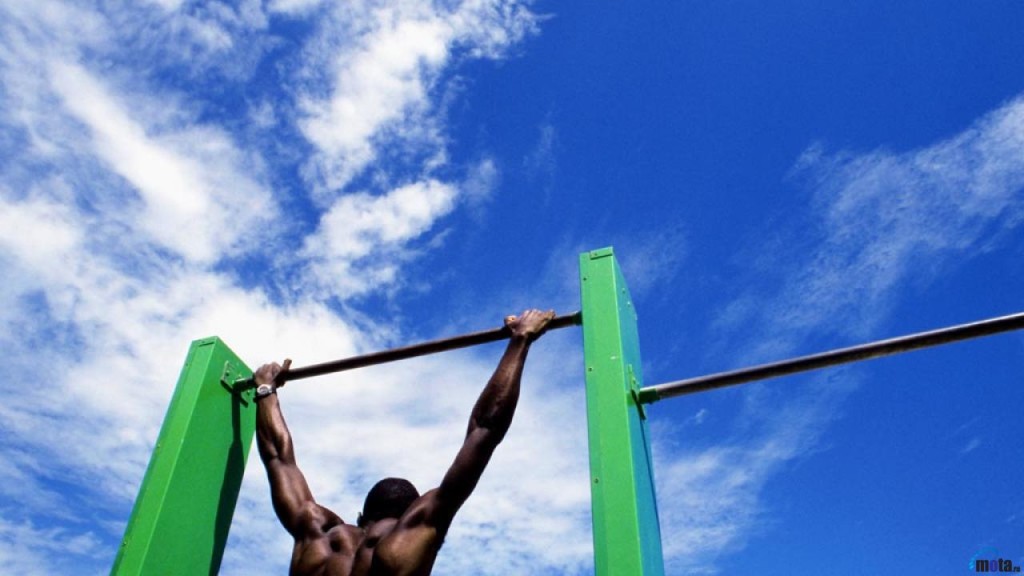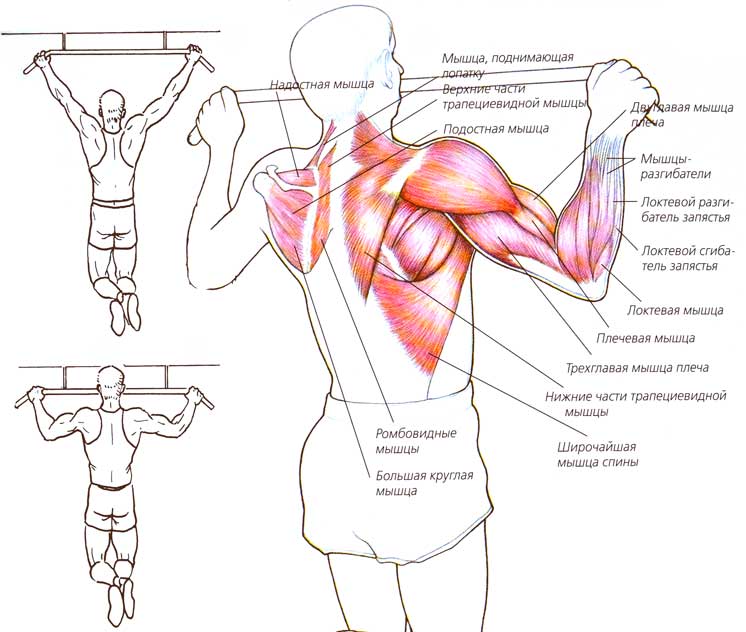(2
ratings, average: 5,00
out of 5)
Pull-ups on the horizontal bar, this is probably the most popular type of exercise, for which you only need your own weight and the crossbar. It can be performed not only in the gym, but also at home.
Horizontal bar, the projectile that does not require special material costs and a lot of space. You can do it in this way without problems at home, on the street and in the gym, the main thing is that there is a horizontal bar itself or a place to fix it.
They help to develop many groups of the back, shoulders, chest and arms, it is this exercise that has established itself as unique in this regard and it can only be compared in terms of performance with some in bodybuilding. But it is worth remembering that when performing this exercise, familiar to everyone since childhood, the correct technique plays an important role. It is the technique that will help to avoid injuries and get the most positive result.

Types of grips on the horizontal bar
- Straight, medium grip, this is the most classic option. It is performed according to the following principle: shoulder-width apart, hands are placed palms forward, and the thumb forms a “lock”. The legs during the exercise should be in a straightened position and brought together. During the training, they should work exactly, the movements should not be sharp and jerky, which should be taken into account when performing all grips. In order not to injure your hands when moving down, do not relax them as much as possible. Many experts believe that the biceps work much more efficiently when moving down, and therefore they recommend moving up much faster than moving down. If the technique is correct, then at the top the chest should touch, and at the bottom the arms should be completely straight. During this exercise, the following are involved in the work: forearms, trapezium, shoulder girdle, triceps, lats, biceps. How to properly position your hands with this grip can be seen in picture A.
- Reverse narrow grip, this type is similar to the direct one, its only difference is that when it is performed, the palms look at the athlete, as shown in picture B. There is one more nuance that should be taken into account, this is the lower part of the chest must necessarily touch the horizontal bar and at the same time shoulder blades should be brought together. In this case, work: biceps and the lower part of the broadest.
- Parallel narrow grip. In this case, the palms are parallel to each other, as shown in picture D. With this grip, the biceps and the lower part of the lats are actively working.
Classic

Many experts call such types of direct grip. But in fact, this is the classic that is familiar to many from physical education lessons at school.
The fact is that it is this execution of this exercise that gives a very diverse load on a different group, hands, forearms. Also, triceps are involved in the work, but the biceps do not work very well with this arrangement of hands, it follows that the training works for the most part on the general physical condition of the entire shoulder girdle.
The position in the classical is considered not very convenient for the athlete, if we take for comparison, for example: the positions of the palms in one's direction. A similar exercise in bodybuilding can be considered a barbell press for biceps, but here the back muscles are not included in the work.
We can draw the following conclusions about the work of the muscles in this training:
- Back, if you make the grip narrower, then the main load is taken by those located below;
- Biceps, most often work part of the side, and which is inside;
- Triceps, remains in secondary roles;
- Shoulder, before training on the horizontal bar, this part of the body should not be loaded otherwise there will be no result;
- Forearm, the same advice as for the shoulder, since on exhausted muscles it is technically correct to do it and the required number of repetitions will not work.
It is worth noting that all of the above applies to exercises on the horizontal bar with a direct grip with the hands positioned shoulder-width apart.
Neutral

This exercise helps a lot in order to work out, especially the lower parts. Many athletes believe that this training, as an independent one, is ineffective. Therefore, in many recommendations they are advised to be performed in combination.
You can do this on the bars, just the crossbar and with handles. Approaches should be about four with repetitions to failure, that is, as long as there is strength. This will help build tolerance.
Correct execution technique:
- Arrange straight arms and hang;
- Do until the arms are completely bent, while making head movements in different directions alternately. When performing an exercise on the uneven bars, the head remains motionless.
- Movements should have maximum amplitude.
What muscles are being worked on

- Biceps, their work begins at the point of the dead zone;
- The broadest ones begin to work actively at the lower and upper points, when the main load is already left behind;
- Round and large are worked out as the widest;
- Deltoid, work during the entire training;
- Toothed ones also actively work not far from dead spots.
Read other blog articles.
